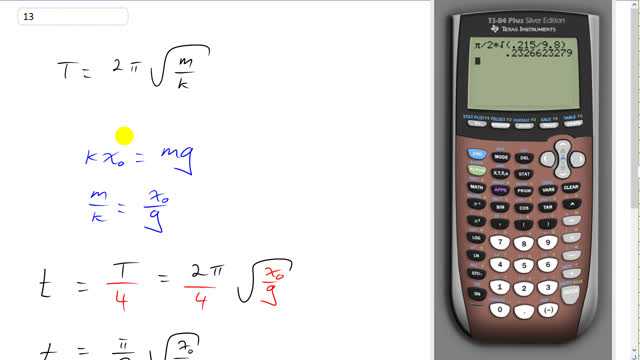
A 1.65-kg mass stretches a vertical spring 0.215 m. If the spring is stretched an additional 0.130 m and released, how long does it take to reach the (new) equilibrium position again?

In order to watch this solution you need to have a subscription.
This is Giancoli Answers with Mr. Dychko. The period of his oscillator is 2π times square root of m over k. Now, when the mass is initially hung from the spring, it stretches it by an amount x naught that's the equilibrium position when the mass is hanging from the spring. And there's going to be a force upwards on the mass equal to k times x naught and that's going to equal the gravity down, mg. So, we can solve for m over k by dividing both sides by kg. And we get m over k is x naught over g. And then we'll replace m over k with x naught over g in our period formula. And we need to know that the time it takes to go from maximum displacement to equilibrium is 1/4 of a full period because when we have this spring stretched below the equilibrium here and it's released, it's going to be going upwards, it'll go up amount to equal to the amplitude. And then it'll go past the equilibrium position another distance equal to the amplitude and then come back down and then return again to this initial point of release. And so that's this distance from the point of release to the equilibrium position is 1/4 of the total path 1/4 of the total period. So, this makes π over 2 times square root x naught over g. So, that's π over 2 times square root of 0.25 meters over 9.8 meters per second squared and notice that the amount by which it was displaced from its equilibrium of 0.130 meters is irrelevant. And so 0.233 seconds is the amount of time to get from the maximum stretch to the equilibrium position.